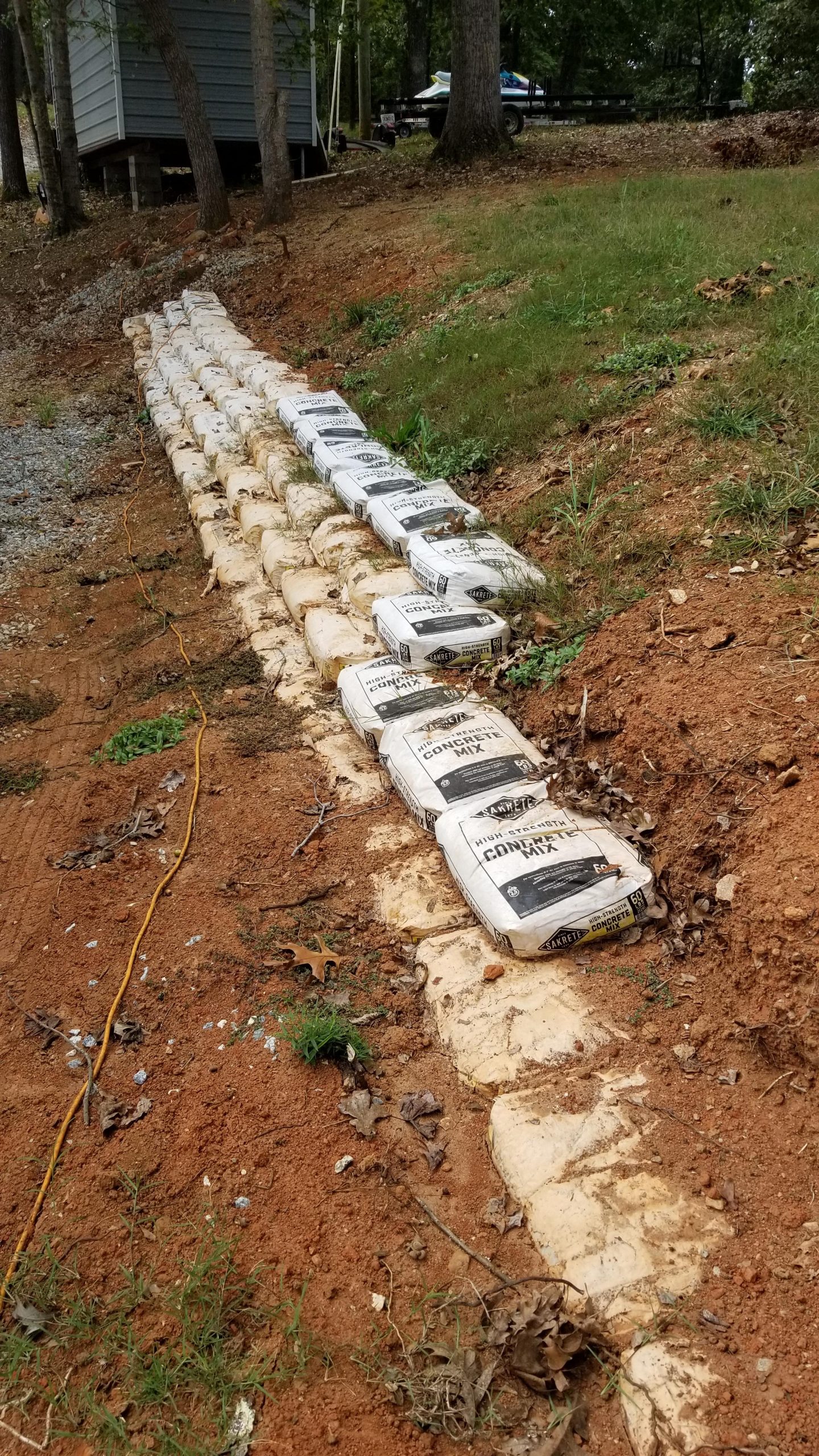This guide provides a clear, step-by-step approach to understanding concrete yield, calculating how many 80 lb bags you need for your project, and offering helpful tips for a successful pour.
Understanding Concrete Yield and Bag-to-Yard Conversions
Before diving into calculations, it’s essential to understand “concrete yield.” This simply means how much usable concrete you get from a single bag. A standard 80 lb bag yields approximately 0.6 cubic feet or 0.022 cubic yards of concrete. This understanding is fundamental to accurately estimating your project needs.
Converting Bags to Yards: A Simple Breakdown
Knowing that one 80 lb bag yields roughly 0.022 cubic yards, you can quickly determine that you’ll need approximately 45 bags to make a full cubic yard (1 cubic yard / 0.022 cubic yards/bag ≈ 45 bags). Keep in mind that this is an approximation. Real-world factors, such as variations in the concrete mix and minor spills, can slightly influence the final number of bags required.
Calculating Your Concrete Needs for Any Project
Now, let’s move beyond simple conversions and apply this knowledge to your specific project. The key is to calculate the volume of concrete you need.
Step-by-Step Volume Calculation
-
Measure: Measure the length, width, and depth (thickness) of the area where you’ll be pouring the concrete. Ensure all measurements are in feet. For example, if your depth is in inches, divide by 12 to convert to feet (e.g., 4 inches / 12 inches/foot = 0.33 feet).
-
Calculate Volume (Cubic Feet): Multiply the length, width, and depth: Length (ft) x Width (ft) x Depth (ft) = Volume (cubic ft).
-
Convert to Cubic Yards (Optional): If you prefer working with cubic yards, divide the volume in cubic feet by 27: Volume (cubic ft) / 27 = Volume (cubic yards).
-
Calculate Bags Needed: Multiply your volume (in cubic feet) by 1.67 (since 1 bag yields approximately 0.6 cubic feet and 1/0.6 ≈ 1.67): Volume (cubic ft) x 1.67 ≈ Number of 80 lb bags.
Real-World Example: A Small Patio
Let’s say you’re building a patio that’s 10 feet long, 8 feet wide, and 4 inches (0.33 feet) thick.
-
Volume: 10 ft x 8 ft x 0.33 ft = 26.4 cubic ft
-
Bags Needed: 26.4 cubic ft x 1.67 ≈ 44 bags
Need to figure out the perfect spacing for your project? Check out our comprehensive 2×6 span chart to ensure structural integrity, and while you’re at it, discover inspiring design ideas with our stunning collection of 16×20 deck plans for your next outdoor haven.
Factoring in Waste and Variations
Always add a buffer to your calculations. A 5-10% extra is a good rule of thumb. In our patio example, adding 5% means getting an extra 2 bags (44 bags * 0.05 ≈ 2.2 bags), bringing the total to 46 bags. This accounts for spills, uneven surfaces, and slight variations in concrete yield.
Different Bag Sizes: A Quick Guide
While 80 lb bags are common, other sizes exist. Here’s a handy table:
| Bag Size (lbs) | Yield (cubic feet) | Approximate Bags per Cubic Yard |
|---|---|---|
| 40 | 0.3 | 90 |
| 50 | 0.45 | 60 |
| 60 | 0.5 | 54 |
| 80 | 0.6 | 45 |
| 90 | 0.67 | 40 (approx.) |
Ready-Mix Concrete: An Alternative for Larger Projects
For extensive projects (driveways, large patios), ready-mix concrete, delivered directly to your site, might be more cost-effective and convenient than handling numerous bags.
Tips for a Successful Concrete Project
- Accurate Measurements: Precise measurements are paramount for correct estimations. Double-check your work!
- Level Surface: Ensure the surface you’re pouring onto is level to minimize variations in concrete thickness.
- Proper Mixing: Follow the manufacturer’s instructions for the correct water-to-cement ratio to achieve optimal concrete strength and yield.
By following these guidelines and understanding the factors influencing concrete yield, you can confidently tackle your next concrete project, big or small.
- Black Backsplash Ideas: Stylish Kitchen Transformations to Inspire You - November 8, 2025
- Dark Backsplash Ideas: Drama and Depth for Your Kitchen - November 7, 2025
- Black Backsplash Tile: Find The Perfect Style For Your Kitchen - November 6, 2025










